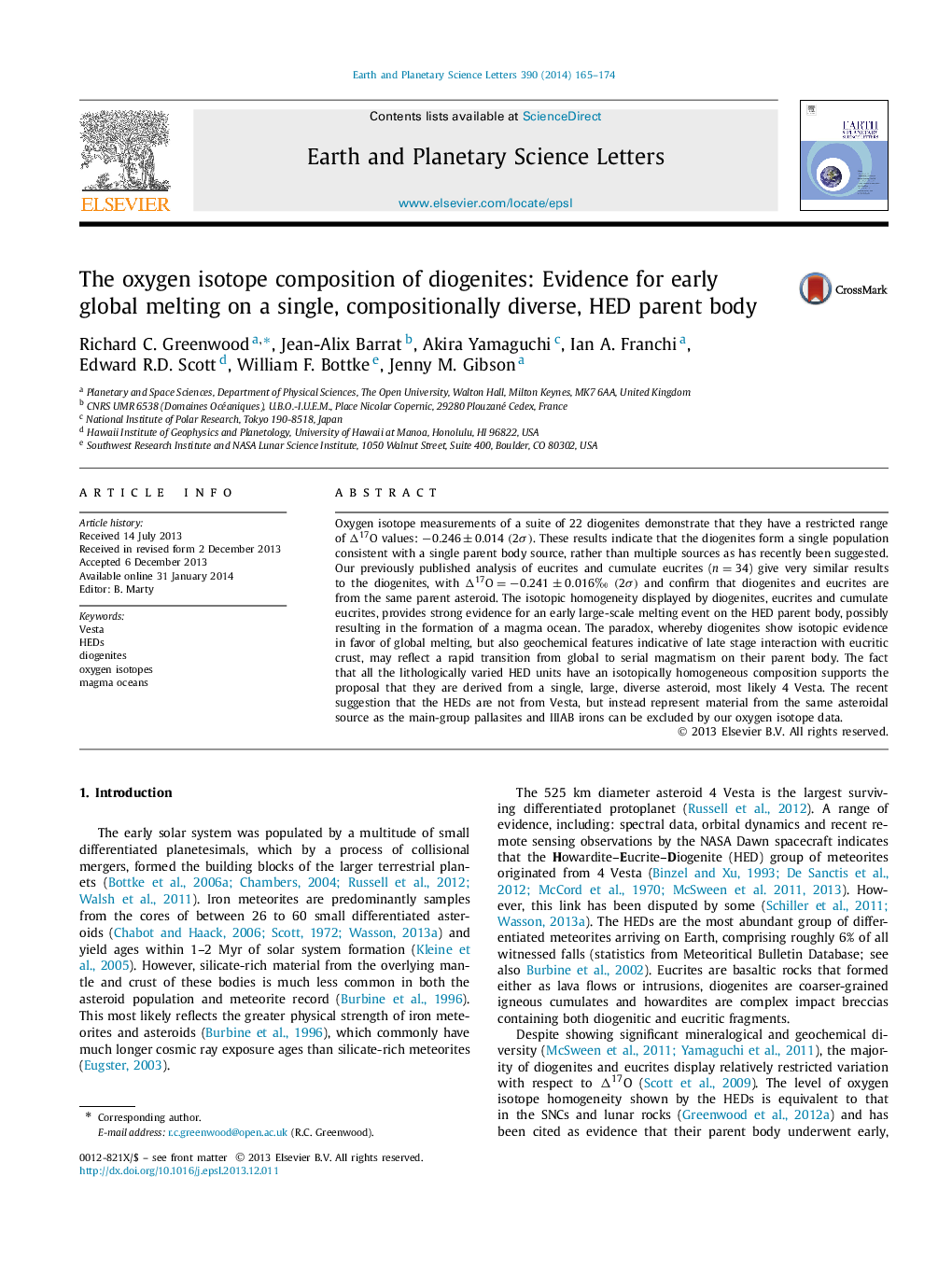| کد مقاله | کد نشریه | سال انتشار | مقاله انگلیسی | نسخه تمام متن |
|---|---|---|---|---|
| 6429594 | 1634766 | 2014 | 10 صفحه PDF | دانلود رایگان |

- New oxygen isotope data shows that diogenites are homogeneous in terms of Î17O.
- HED Î17O homogeneity was the result of early global, parent body, melting.
- Our data is consistent with a single parent body source for the HEDs.
- Oxygen isotope variation is consistent with 4 Vesta as the HED source asteroid.
- Models for a common HED-IIIAB-pallasite source are not supported by our data.
Oxygen isotope measurements of a suite of 22 diogenites demonstrate that they have a restricted range of Î17O values: â0.246±0.014(2Ï). These results indicate that the diogenites form a single population consistent with a single parent body source, rather than multiple sources as has recently been suggested. Our previously published analysis of eucrites and cumulate eucrites (n=34) give very similar results to the diogenites, with ÎO17=â0.241±0.016â°(2Ï) and confirm that diogenites and eucrites are from the same parent asteroid. The isotopic homogeneity displayed by diogenites, eucrites and cumulate eucrites, provides strong evidence for an early large-scale melting event on the HED parent body, possibly resulting in the formation of a magma ocean. The paradox, whereby diogenites show isotopic evidence in favor of global melting, but also geochemical features indicative of late stage interaction with eucritic crust, may reflect a rapid transition from global to serial magmatism on their parent body. The fact that all the lithologically varied HED units have an isotopically homogeneous composition supports the proposal that they are derived from a single, large, diverse asteroid, most likely 4 Vesta. The recent suggestion that the HEDs are not from Vesta, but instead represent material from the same asteroidal source as the main-group pallasites and IIIAB irons can be excluded by our oxygen isotope data.
Journal: Earth and Planetary Science Letters - Volume 390, 15 March 2014, Pages 165-174